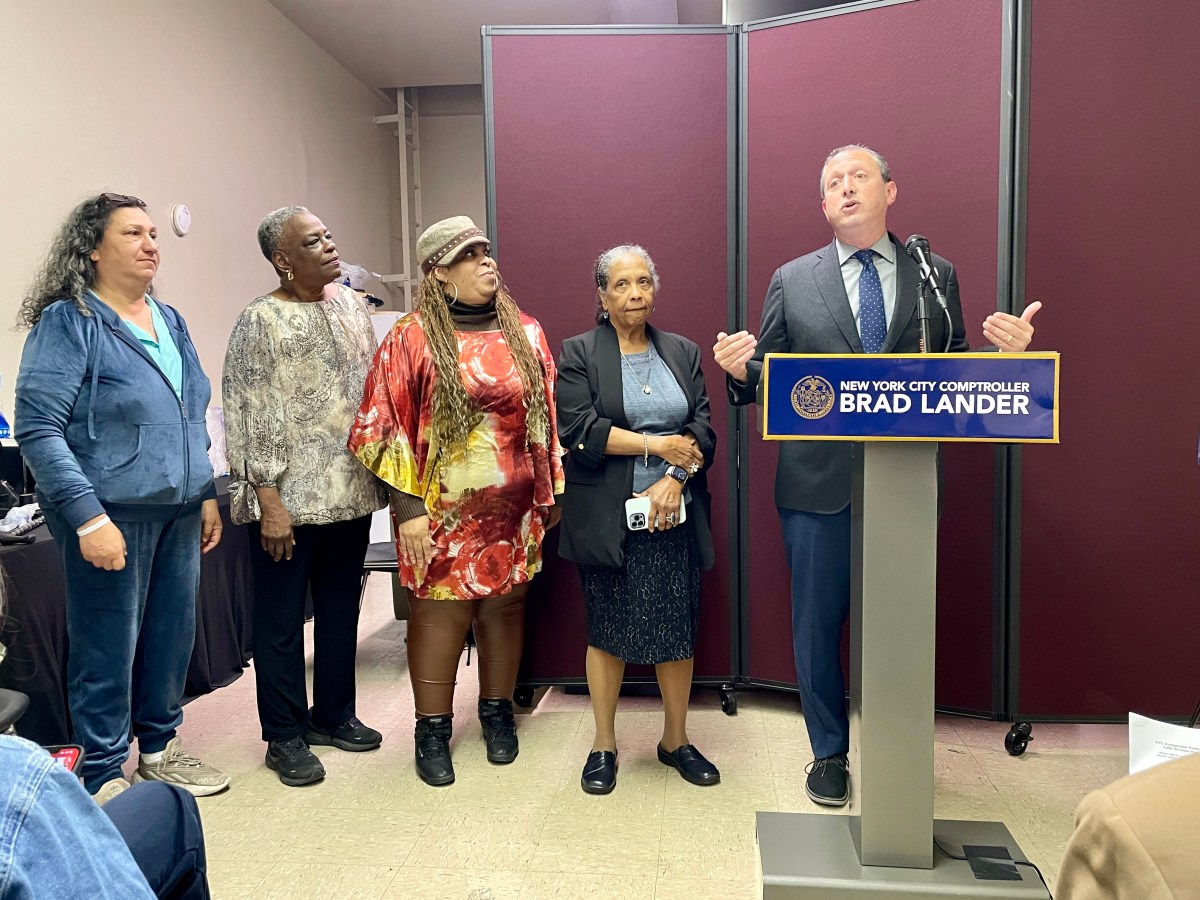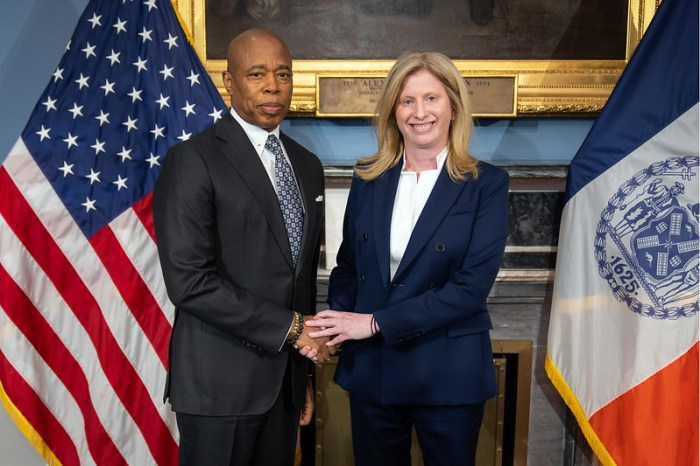Facing soaring delays and crippling system outages, the MTA on Monday announced a six-point plan that aims to restructure agency leadership and improve subway reliability.
The plan outlines strategies to tackle the most common day-to-day operational miseries that stem from the agency’s struggle to serve its growing ridership — from train car overcrowding to sick passenger holdups and train traffic bottlenecks.
It also will split the chairman and CEO positions, which have been one joint job since 2009, and expedite the delivery of new train cars.
Ronnie Hakim, the agency’s interim executive director, said the ideas in the plan, to be rolled out as a pilot along Eighth Avenue beginning immediately, would cost $20 million and represent quick fixes to patch mounting service issues. It will start along 19 stations of the Eighth Avenue line of A, C and E trains, running from the 125th Street to Fulton Street stations.
“It’s not only the ongoing infrastructure investments … but it’s also what can we do in the near term to address the growth and address the customers’ desire to have good, safe, reliable transportation,” Hakim said. “This is a series of steps that have been in the works for several months in order to try to say, ‘We’re not just waiting for capital program investments. We’re going to try to do things differently as we manage the subway system.’”
Here’s a breakdown of the six-point pilot:
1. Separate the chairman and CEO positions
2. Expedite delivery of new subway cars and improve current car maintenance
-The first round of new cars will arrive this fall and all will be delivered by September 2018, with more to come in the following years.
-The MTA will “revamp” its car maintenance procedures by adding more inspectors and ensuring that all cars get a “pre-service inspection” to reduce the chance of failures while in service. The Eighth Avenue corridor is home to some of the oldest subway cars still rolling.
-Key parts of cars, including doors, heating and air conditions, and master controllers, will be replaced “on a regular schedule before they fail.”
3. Improve tracks and signals
-Track inspectors will increase “ultrasonic testing” from once a month to twice a month. This testing identifies problems that could lead to failure.
-The rapid response teams will be expanded, adding more personnel and equipment at busy stations to address track and signal issues. The MTA aims to reduce response time to 15 minutes or less.
-The agency will install new train rail faster using a machine, known as “the Critter,” rather than having workers carry the rail to install it. The MTA plans to lay 3,000 feet of track to cover the Eighth Avenue corridor by September 2017.
-Portable vacuums will be used to clean up trash along the tracks.
4. Lessen delays due to sick passengers and police activity
-New EMTS will be hired, trained and placed at five stations along Eighth Avenue to quicken response time to sick passengers. On average, a sick passenger delay occurs 28 times each month along the Eight Avenue corridor, with an average delay of 12 minutes per incident, according to the agency.
-The MTA will increase availability at key corridors to the NYPD.
5. Streamline loading and unloading
-Hakim said the MTA will be experimenting with color-coded sections of platforms and possibly train cars as well to help guide riders to less-crowded boarding areas.
6. Target train bottlenecks
-The MTA will more actively manage merge points within the subway system to help trains move more quickly through them.
Transit advocates said much more work would be needed to truly change the narrative, but they were encouraged to see the MTA finally acknowledge the decreasing quality of subway service. The announcement of the plan comes less than a week after a power failure hit track signals at the DeKalb Avenue station, which hobbled service along eight lettered lines at the height of a morning rush hour.
At one point, B train service was suspended entirely during the outage. Riders followed with a rally outside of Gov. Andrew M. Cuomo’s office in midtown later in the week.
“With this plan, the MTA is taking the right first step: acknowledging that riders are suffering and need immediate action to improve subway service,” said John Raskin, executive director of the Riders Alliance, in a statement. “These short-term plans must also be matched with a long-term vision that acknowledges the scale of the problem and invests the billions of dollars we’ll need to get to reliable, quality service.”
Gene Russianoff, spokesman for the NYPIRG Straphangers Campaign, believed the MTA is addressing its biggest service maladies, but he couldn’t say definitively if the plan would bring noticeable improvements to riders.
“They’re certainly targeting the right issues,” he said. “Only time is going to tell whether it’s a serious plan or a slapdash one.”
It’s not immediately clear how much it would cost to expand the program, or when it would be considered for other lines.
With Nicole Brown




























